Based on Your Reading:
Get Your Free Mesothelioma Guide

Find a Top Mesothelioma Doctor

Access Help Paying for Treatment

Asbestos and asbestos products were a major component of the metal works industry for much of the 20th century. Before safety measures were instituted in the 1980s, blacksmiths, welders, smelters, steel mill workers, aluminum and iron factory workers did their jobs in workplaces that were havens for asbestos exposure.
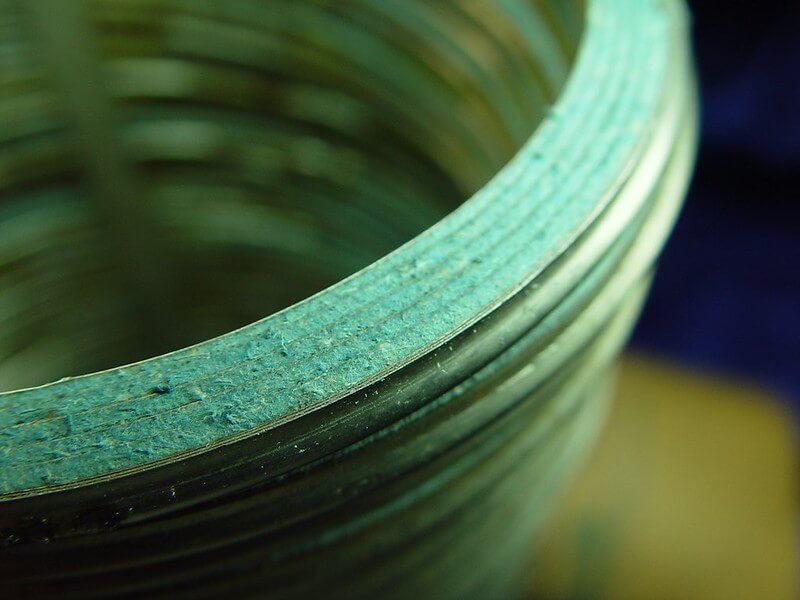
Written by Daniel King • Edited By Walter Pacheco • Scientifically Reviewed By Dr. Jerald L. Cook
The Mesothelioma Center at Asbestos.com has provided patients and their loved ones the most updated and reliable information on mesothelioma and asbestos exposure since 2006.
Our team of Patient Advocates includes a medical doctor, a registered nurse, health services administrators, veterans, VA-accredited Claims Agents, an oncology patient navigator and hospice care expert. Their combined expertise means we help any mesothelioma patient or loved one through every step of their cancer journey.
More than 30 contributors, including mesothelioma doctors, survivors, health care professionals and other experts, have peer-reviewed our website and written unique research-driven articles to ensure you get the highest-quality medical and health information.
My family has only the highest compliment for the assistance and support that we received from The Mesothelioma Center. This is a staff of compassionate and knowledgeable individuals who respect what your family is experiencing and who go the extra mile to make an unfortunate diagnosis less stressful. Information and assistance were provided by The Mesothelioma Center at no cost to our family.LashawnMesothelioma patient’s daughter


King, D. (2023, December 5). Asbestos in Metal Works. Asbestos.com. Retrieved April 18, 2024, from https://www.asbestos.com/metalworks/
King, Daniel. "Asbestos in Metal Works." Asbestos.com, 5 Dec 2023, https://www.asbestos.com/metalworks/.
King, Daniel. "Asbestos in Metal Works." Asbestos.com. Last modified December 5, 2023. https://www.asbestos.com/metalworks/.
Much of this stemmed from the fact that the process of making metal products typically involved temperatures as high as 3,000 degrees Fahrenheit and asbestos and asbestos materials were routinely incorporated into factory machinery.
Asbestos-laden lagging was wrapped around hot pipes, furnaces, ovens, tanks, generators, rolling mills, cranes and boilers as insulation in fireproof workspaces.
Asbestos also was used in some of the protective clothing (aprons, mitts, coats, pants or masks) for the people who operated the machines.
It is estimated that metalworkers who labored in the shipbuilding industry or around construction sites also faced increased risks for exposure because asbestos was mixed with more than 3,000 construction products.
Doctors had made a connection between asbestos and lung diseases as early as the 1930s, yet it was rare that anyone warned metal works employees about these risks. However, when the word finally got out, workers began to realize that their breathing problems might be caused by their exposure to asbestos.
Family members of metal factory workers also are at risk because of potential secondary exposure. Fibers brought home on the clothes or body of the employee could be inhaled by spouses, children and others with whom workers they came into contact.
These effects of asbestos can develop many years after exposure, so retired metalworkers should continually receive checkups to look for signs of an asbestos-related disease. Several former metalworkers have filed lawsuits to gain compensation for their illnesses.
There are many jobs in the metal works industry that regularly faced asbestos exposure hazards. Some laborers worked in large factories, while others performed tasks in smaller shops or traveled to various sites. Here is a list of occupations most affected by exposure to asbestos.
Because of the constant threat of heat and fire, asbestos was prevalent throughout steel mills. As asbestos-containing materials aged and were replaced, asbestos fibers often were sent airborne and inhaled by anyone in the steel mill.
In one study of steel mill workers, asbestos fibers were found in the bodies of maintenance workers and production workers.
Inside the mill, asbestos was used in protective gloves, protective clothing, countertops, liner board, and blankets. Other studies have demonstrated increased risks for asbestos-related lung cancer among steel mill workers.
An old trade that shaped metals into practical items, blacksmiths faced asbestos hazards largely because of the necessity to have fire and heat around.
To reduce the risk of fires, blacksmiths often worked in areas insulated with asbestos. They also wore gloves, aprons and masks that may have been made with asbestos.
These workers specialize in joining (welding) metals together. Like others in the metalworking occupation, they were surrounded by constantly heated temperatures and inevitably had some asbestos-containing materials or clothing for protection.
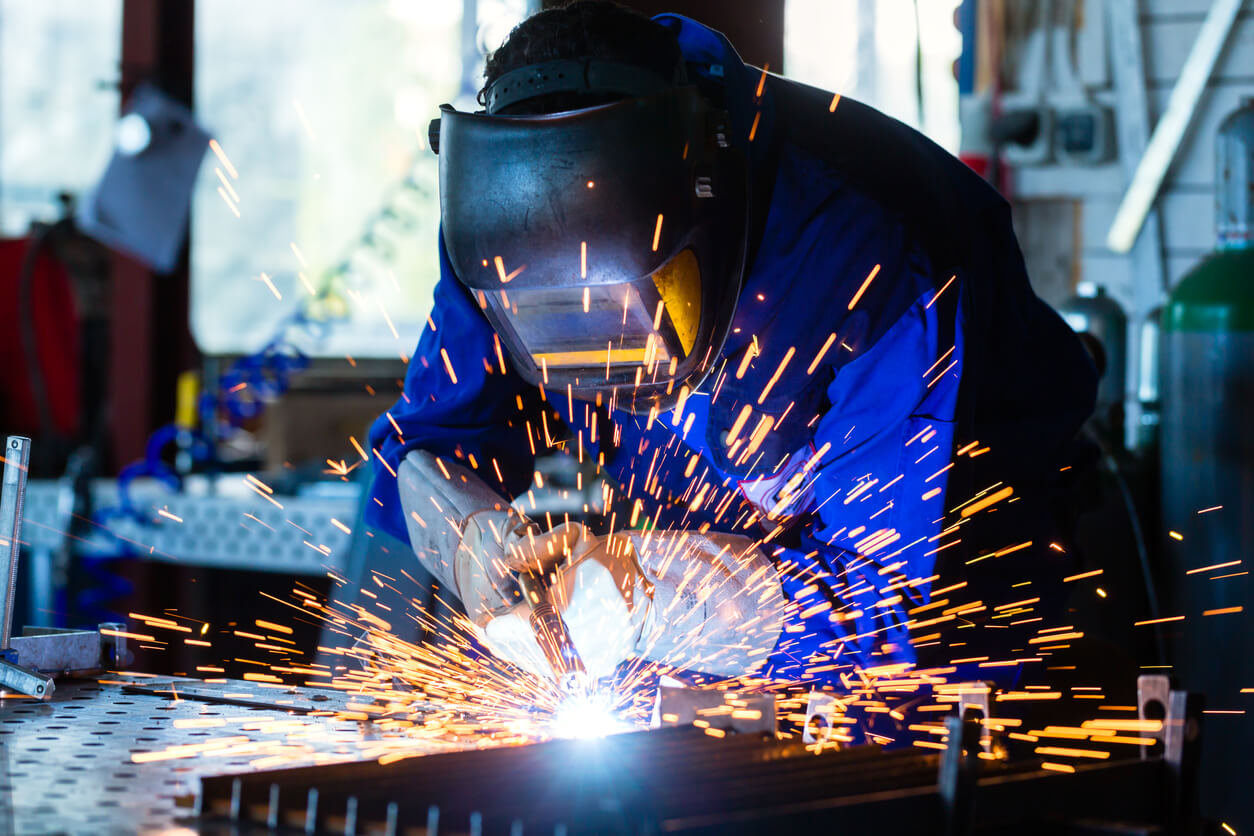
Several studies found welders are more at risk for developing mesothelioma because of exposure to asbestos. In one study of shipyard welders, 13 of 306 of them were found to have irregular developments on their lungs caused by asbestos fibers.
In another, five deaths were attributed to pleural mesothelioma. Additional studies also noted increased rates of lung cancer among welders.
The hazards facing smelter workers were caused by asbestos-containing materials they used for protection. Their workstations often were constructed with asbestos products for safety reasons.
In some cases, welders may have even worked on asbestos materials. In an asbestos exposure assessment of aluminum smelter workers, as much as 40 percent of the workers studied were exposed to asbestos.
Former aluminum and ironworkers may have been exposed to asbestos during daily work tasks because the facilities they worked in were often constructed with asbestos-containing materials. The heavy machinery they used was also a potential source for exposure because they may have been made with parts containing asbestos.
Because of the overwhelming use of asbestos in their heated work conditions, many metalworkers affected by asbestos diseases sought financial restitution through litigation. More than 60 trusts with assets of $36 billion were set up to pay victims of asbestos-related illnesses.
One example of this is from a 2010 case involving former steel mill worker Barry Baumener. A jury awarded Baumener’s family $2 million after he passed away from mesothelioma. The company responsible for his exposure to asbestos was Oglebay Norton Co., which supplied asbestos-containing products to the mill where Baumener worked.
In addition to the $2 million received from Oglebay Norton, Baumener’s family settled with 24 other companies for an undisclosed amount of money.
Oglebay Norton is only one U.S. metal works factory associated with asbestos. Virtually every state has a similar factory with its borders.
Among the largest metalworks companies in the U.S. are (or were): Harvey Aluminum, U.S. Steel, Bethlehem Steel, Alcoa, USS-Posco Industries, Reynolds Aluminum, Wheeling Pittsburgh Steel and AK Steel.
Get Your Free Mesothelioma Guide

Find a Top Mesothelioma Doctor

Access Help Paying for Treatment


Harvey Aluminum produced thousands of tons of aluminum each year, and employees were responsible for a variety of tasks ranging from research, development and design to operating furnaces and other equipment.
Many of these jobs were hazardous, especially in the early days of the company before OSHA rules and other safety guidelines were in place.
The EPA in Wasco County, Ore., began investigating the Harvey Aluminum plant in The Dalles in 1984. The agency focused its work on the hazards of a 15-acre landfill that contained large amounts of construction debris, including asbestos.
The site also contained tons of waste material such as arsenic and cyanide. The debris affected groundwater in the region around the Columbia River floodplain, and though clean-up was completed in 1996, the effects are still unknown.
Orchard owners in the same area of Oregon sued Harvey Aluminum for excessive amounts of fluorine and other toxins that were being released by the plant. Martin Marietta purchased Harvey Aluminum in 1972 and changed the name to Martin Marietta Aluminum. The company was a major producer of aluminum products until 1984.
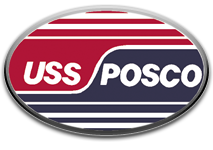
USS-Posco Industries is a joint venture between POSCO of the Republic of Korea and the U.S. Steel Corporation. USS-POSCO Industries produces flat-rolled steel sheets of several varieties including cold-rolled, galvanized and tin plate. The plant is located in Pittsburg, Calif., where it employs about 1,000 workers.
The company opened in 1910 as Columbia Steel and from the 1920s through the 1940s, the little foundry produced pieces used for the building of the San Francisco-Oakland Bay Bridge and remained busy producing steel during World War II.
Numerous upgrades were made during the 1960s and 1970s, and the plant became known as having the most diverse product line of any steel plant in America.
For more than 40 years, the company used tons of asbestos inside the plant to insulate ovens, furnaces, pipes, pumps, boilers and mills. Asbestos coated friction products such as brakes on machinery inside the plant.
Plant workers wore clothing made from asbestos cloth to protect their skin from burns and typically were unaware of the toxicity of asbestos fibers.
In 2003, the corporation noted that 14,000 claimants have filed suit against them for injury resulting from asbestos exposure. The company stated that the number of claims has remained steady over the past 12 years as more and more individuals discover they have developed mesothelioma because of on-the-job exposure.
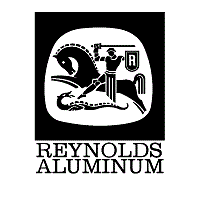
Reynolds Aluminum was the second-largest aluminum and packaging producer in the U.S. and the third-largest in the world when it was acquired by Alcoa in June 2000. The company is best known as the maker of Reynolds Wrap aluminum foil.
It was started in 1919 in Louisville, Ky., as the U.S. Foil Company. It served as a supplier of foil wrapping for cigarettes and candy and quickly branched out into other endeavors. Headquarters were moved to Richmond, Virginia, in 1938 and remained there for the life of the company.
Reynolds developed a number of other interesting products, including both an aluminum bus and an aluminum submarine. By the 1990s, the company boasted 100 operations in 20 countries, employing about 31,000 workers. The company merged with Alcoa in 2000 and was sold again in 2008 to industrialist Graeme Hart.
It now operates under the name Reynolds Packaging Group. Since that time, several Reynolds plants ceased operations.
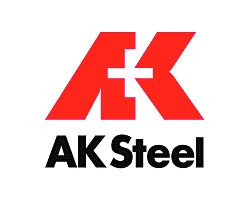
Based in West Chester, Ohio, AK Steel began as Armco in 1899 and quickly grew to be one of the world leaders in the steel industry. It earned a number of notable patents, including a patent for crash barriers (called Armcos) that are used at auto raceways around the world. AK Steel employs 6,500 people.
As of 2009, 426 asbestos lawsuits were pending against AK Steel Holding Corporation. Most of these involved employees or others who were exposed at the company’s sites. As many of them are class action suits, the number of plaintiffs involved most likely numbers in the thousands.
As is typical of such lawsuits, many of these allege that AK Steel executives knew about the dangers of asbestos but did not relay this information to employees or do anything to protect them from related hazards.

Martin-Marietta Aluminum was formed when the Martin Company acquired Harvey Aluminum in 1968, though the name of the company was not changed until 1971.
Martin-Marietta Aluminum operated an aluminum reduction facility at the John Jay Dam on the Columbia River in The Dalles, Ore., from the time of takeover until the plant closed in 1984. Following the closure, Northwest Aluminum obtained a lease for the site two years later and aluminum is still produced there.
In 1984, the EPA declared the Martin Marietta Aluminum plant in The Dalles, Ore., a Superfund site and placed it on its priorities list. Much of the waste from toxic materials used in aluminum production ended up in a landfill located on the property.
According to the EPA, the debris included asbestos insulation, coke, pitch and cathode waste.
The EPA concluded that “thirteen source areas and a portion of the shallow ground-water bearing zone had contaminant concentrations that exceeded federal or state applicable relevant and appropriate requirements or acceptable lifetime non-cancer or cancer risk levels.”
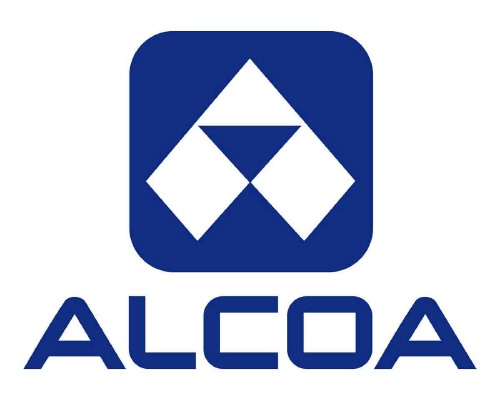
Alcoa is the largest producer of fabricated and primary aluminum in the world with sales of $23.7 billion in 2012. The company is also the world’s largest miner and refiner of alumina and bauxite. Originally known as the Aluminum Company of America, Alcoa maintains a presence in 31 countries with approximately 60,000 employees.
During some of the company’s busiest times – namely from World War II until the 1970s – Alcoa made abundant use of toxic asbestos inside their plants. For decades, exposure was almost unavoidable if you were an employee directly involved in production.
In 2008 in Blount County, Tennesse, the adult daughter of a former Alcoa employee died of mesothelioma. She filed suit against the company when she learned asbestos was the cause of her disease. A multi-million dollar settlement was awarded to the woman’s family.
Similarly, a $20 million settlement was awarded to another Alcoa family who lost their wife and mother due to secondary exposure.
Such suits helped establish an employer’s “duty of care.” That is, the employer had the responsibility to tell employees about the hazards they faced on a daily basis.
In the case of Alcoa and the aforementioned Tennessee suit, the Supreme Court decision in favor of the plaintiff was largely based on the fact that the company chose to ignore a 1972 OSHA regulation that prohibited employees from taking their clothes home to be laundered.
Hence, the employee in question exposed his premature baby daughter to the toxic fibers that would later kill her.
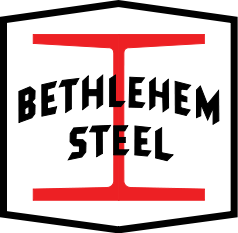
Pennsylvania’s Bethlehem Steel was once the second-largest steel producer in the country and boasted roots that went back to the mid-1800s when the company got its start as the Saucona Iron Company.
As it grew and changed, it would later become the Bethlehem Rolling Mill and Iron Company, Bethlehem Iron Company, and finally in 1899, Bethlehem Steel.
The company was involved in a number of endeavors that made working for the organization dangerous. Throughout the years, there were plenty of accidents inside their steel mills and at their shipyards, some fatal.
In addition, Bethlehem Steel used many toxic chemicals and other hazardous materials in the making of their products and in the building of ships. These substances, which included asbestos, had an adverse effect on those who worked with or near them at the company’s steel and shipyard plants.
Employees in places like Bethlehem Steel’s many plants began to notice breathing problems and many were dying at a young age, but they were told that asbestos had nothing to do with their ailments or untimely deaths.
An October 2000 article in the Allentown Morning Call, a Bethlehem-area newspaper, cited the filing of more than 400 lawsuits by Bethlehem Steel retirees. The number was expected to climb to more than 3,000. The same thing happened at the company’s other plants.
In addition, thousands of former Bethlehem Shipyard employees also filed suit, including many who worked at these locations during World War II. The company filed for bankruptcy in 2001, and in 2003, its remaining assets, which including six large plants, were sold to the International Steel Group.

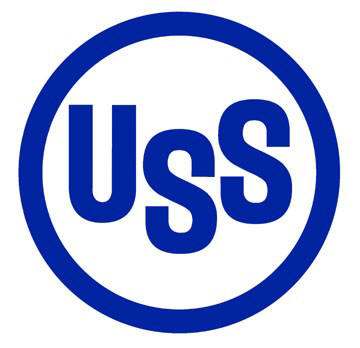
USX Corporation, more commonly known as U.S. Steel or the United States Steel Corporation, is the largest domestically-owned integrated steel producer in the United States.
Based in Pittsburgh, the company produces a wide variety of sheet and tubular steel products for use in a number of different industries including construction, automotive, industrial machinery, oil and gas, appliance and container.
According to court records, by 2003 U.S. Steel had nearly 15,000 active asbestos claims outstanding against the company and had already paid about $15 million in settlements. That same year, however, USX faced a major loss in the case of a 70-year-old retired worker from its Gary, Ind., plant.
Roby Whittington, a mesothelioma victim who had worked for the company for more than 30 years, was awarded a sum of $250 million by the courts, the largest to a single plaintiff in a U.S. asbestos case. The company was stunned.
By the end of 2005, the total number of asbestos lawsuits filed against USX numbered about 14,000. These claims were filed not only by employees, including former shipyard workers, but also by those who were allegedly exposed to products manufactured by U.S. Steel.

Founded in 1909, Weirton Steel is now part of the ArcelorMittal family of companies. Weirton steel thrived for nearly a century, employing thousands of individuals at its facilities.
Employees became a tight-knit community and were proud of their work. What most didn’t realize, however, was that the job they did every day may have been making them sick.
When information was finally released that verified the connection between asbestos and mesothelioma, Weirton employees were astounded. Those who had already been diagnosed with an asbestos-related disease, including cancer, started filing lawsuits against Weirton Steel and other companies that used or manufactured asbestos materials.
Weirton was eventually named in a large number of asbestos lawsuits. As a matter of fact, it wasn’t unusual for large groups of workers to join together to file class action suits against the company as well.
In addition, some suits were filed by family members because mesothelioma had already claimed the lives of their loved ones and they were seeking help with medical bills and other financial problems caused by loss of income.
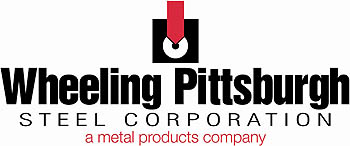
Founded in 1920, Wheeling Steel was respected for its quality products. For many decades, it was one of the major employers in the Pittsburgh area, and through the years, it was typical for many generations of the same family to work at the company’s steel mills.
Unfortunately for these families, the steel mills belonging to Wheeling-Pittsburgh were making employees sick. Because asbestos was used in steel mills as a common insulation material from the 1940s through the end of the 1970s, many workers were exposed to this toxic material while performing their daily tasks.
Many Wheeling-Pittsburgh Steel employers sought legal representation and sued the company for compensation, citing exorbitant medical bills for the treatment of their mesothelioma and loss of income due to the inability to work.
In addition, laborers, pipe fitters, electricians, insulators, and other employees have gathered together to file class action suits against the company, placing the blame for their illnesses on their employer.

LTV (Ling, Temco and Vough) Steel opened its plants in 1947 with entrepreneur James Ling, an electrical contractor from Dallas. In 1960, Ling merged with Temco Aircraft. Soon thereafter, Ling-Temco purchased Chance Vought Aerospace Company, to form Ling-Temco-Vough, later shortened to LTV.
The company went on to form one of the largest and most successful conglomerates of the 1960s, reporting sales of $2.7 billion by the end of 1969. Some of the companies acquired by LTV include Okonite Wire and Cable, Wilson and Company, National Car Rental and J&L Steel.
As in all steel mills that operated prior to about 1980, LTV’s steel mills made abundant use of asbestos as a form of insulation for machines and employees.
Part of the reason that LTV filed for bankruptcy in 1986 and again at the turn of the millennium was because the company was facing a never-ending pile of lawsuits filed by those who got sick due to exposure to asbestos and other toxins while working at one of LTV’s many steel-making facilities.
Once bankruptcy was declared, new lawsuits were forbidden in accordance with automatic stay provisions that are part of the bankruptcy code. Hence, the company was able to avoid further litigation.
Though the company was deemed healthy by 1994, the assumption of more debt prompted another bankruptcy in 2000 and it ceased operations in 2001.

Nucor is the largest producer of steel in the United States with a capacity of more than 26 million tons per year. One of the world’s top steel recyclers, the company produces steel bars, steel reinforcing bars, structural steel, steel joists and girders, and steel decks, all using scrap as their primary feedstock.
Headquartered in Charlotte, North Carolina, Nucor boasts 200 operating facilities throughout the U.S. including those that operate under the Harris Steel and David J. Joseph Company, which are wholly-owned subsidiaries of Nucor. The company employs about 21,000 individuals, many of whom are paid based on performance.
Individuals in a wide variety of positions came in contact with asbestos regularly. Those who worked as furnace operators, pourers, casters, tenders, and machine inspectors are all likely to have inhaled asbestos fibers at one time or another.
In 2000, the U.S. Environmental Protection Agency (EPA) filed a complaint against Nucor, alleging that the company violated environmental statutes at one or more of their 14 steel plants across the country.
The complaint stated that Nucor’s mini-mills and fabrication operations “generate significant amounts of certain criteria air pollutants: Carbon Monoxide, Nitrogen Oxide, Sulfur Dioxide, Volatile Organic Compounds, and Particulate Matter. Other pollutants include: water pollutants, including biochemical oxygen demand, oil and grease, total suspended solids and zinc … and other hazardous and solid wastes attendant to the steel manufacturing and fabrication processes.”
Your web browser is no longer supported by Microsoft. Update your browser for more security, speed and compatibility.
If you are looking for mesothelioma support, please contact our Patient Advocates at (855) 404-4592
